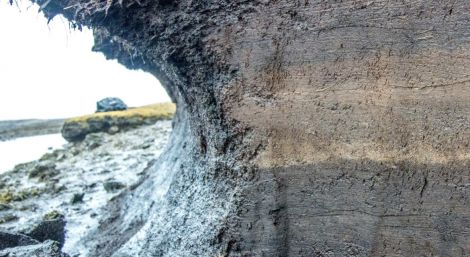History / Researchers aim to discover more about past tsunamis
A RESEARCH project will get underway later this year in and around Shetland with the aim of producing a more complete prehistoric account of how many tsunamis have impacted the North Sea region.
Shetland, which has recorded these past tsunami events with “exceptional quality”, will play a “key role” in the project.
The project will be led by Belgium’s Ghent University in conjunction with academics who have previously worked on onshore tsunami deposits in Shetland.
Perhaps the best known example of a tsunami in the region was caused by the Storegga submarine landslide off the coast of Norway around 8,200 years ago.
It caused a 20-metre high tsunami to hit Shetland.
Professor in marine and sedimentary geology at Ghent University Marc De Batist said previous research of tsunami deposits in Shetland have revealed traces of three tsunami inundations.
“We suspect that there may be traces of even more tsunamis, which have yet to be discovered,” he added.
“Up to now, all tsunami research in the Shetlands has focused on identifying tsunami deposits onshore, along and above the present-day shorelines.
“It is, however, very likely that past tsunamis have also left an imprint in what is currently below sea level, in the embayments, in the voes.
“With this project, we will explore the offshore realm for traces and deposits that we can link to past tsunamis.
“We will map in detail the sedimentary infill of the embayments and voes and take sediment cores of promising features to ascertain their tsunami origin and to find out how old they are.
“We hope to be able to produce a more complete prehistoric account of how many tsunamis have impacted the North Sea region and when exactly they occurred.”
The team expect to visit Shetland later this year on the research vessel Belgica.
Become a member of Shetland News
De Batist said that while there are tsunami deposits in Shetland, it does not mean the islands are “particularly susceptible to or at particularly high risk of being inundated by tsunamis”.
“But likely their geology, the type of landscape and the amount of human impact have allowed a better preservation of past tsunami deposits here compared to other coasts further south in the North Sea,” he said.
Meanwhile the university is currently recruiting for a four-year PhD researcher for the project.
The academics also working on the project include Prof. Maarten Van Daele, Prof. Vanessa Heyvaert (Geological Survey of Belgium, Royal Belgian Institute of Natural Sciences), Prof. Sue Dawson (University of Dundee), Prof. Pedro Costa (University of Coimbra) and Dr. Max Engel (University of Heidelberg).
Become a member of Shetland News
Shetland News is asking its many readers to consider paying for membership to get additional features and services: -
- Remove non-local ads;
- Bookmark posts to read later;
- Exclusive curated weekly newsletter;
- Hide membership messages;
- Comments open for discussion.
If you appreciate what we do and feel strongly about impartial local journalism, then please become a member of Shetland News by either making a single payment, or setting up a monthly, quarterly or yearly subscription.



























































